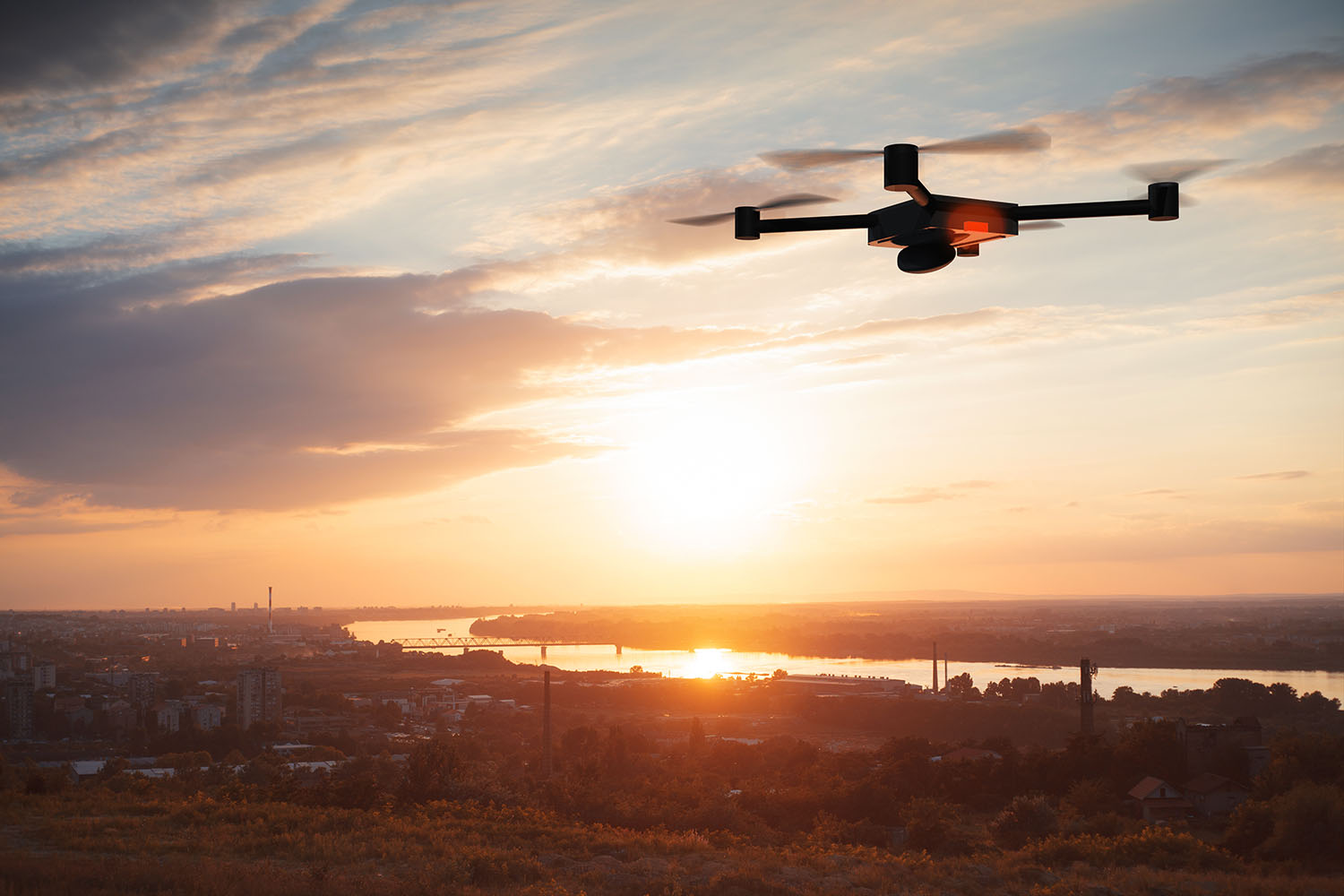English High Court recent rulings consider landowners' rights to an injunction against drone users
Published on 15th April 2025
Two approaches have been taken by the High Court to granting injunctions against 'drone trespass' over private property

As caselaw surrounding drone flight develops, the decisions in Anglo International Upholland Ltd v Wainwright & Persons Unknown [2023] and MBR Acres Ltd v Curtin [2025] offer a window into the English court's approach to granting injunctions to stop drones flying over private property.
In each case, the court emphasised different factors when considering granting an injunction preventing alleged drone trespass. Both judgments offered clues as to how a court might decide, but fell short of providing certainty for landowners seeking this remedy.
Recent drone-related caselaw
The Anglo International Upholland case concerned urban explorers trespassing on an abandoned seminary building in a dilapidated and unsafe state. The claimants sought an interim injunction against Mr Wainwright and persons unknown for, among other things, the prohibition of drone trespass over Anglo's site. The claimant's case was that the drones were being used to identify entrances individuals could use to trespass on the site.
MBR Acres Ltd v Curtin related to protestors flying drones over MBR Acres's Cambridgeshire site, which is used for the breeding of animals for scientific research. MBR's site had been the focus of a considerable protester presence since 2021.
The claimants sought both an injunction against Mr Curtin to prevent, among other things, him trespassing on the site through the flying of drones and an injunction against "persons unknown" to prevent, among other things, trespass by flying drones over the site below 100 metres.
The Anglo International decision
The court drew attention to section 76 of the Civil Aviation Act (CAA)1982, which provides that “no action shall lie in respect of trespass…by reason only of the flight of an aircraft over any property at a height above the ground which, having regard to wind, weather and all the circumstances of the case is reasonable.”
Since a drone was within the scope of the definition of an "aircraft'" section 76 of CAA 1982 applied. Therefore, the act of flying a drone at a "reasonable height" over the Anglo site could not constitute trespass.
However, the court considered that the "only reason" to fly drones over the Anglo site was to facilitate and encourage trespass through recording footage, which could potentially endanger life. Alternatively, since drones were being flown low enough to provide clear recordings of the site, the height at which the drone was being flown could not be considered "reasonable" under section 76 CAA 1982. Accordingly, the court was not prevented from finding trespass by that section, and the injunction was an appropriate and proportionate remedy. The judgment highlighted the unsafe condition of the building and the risks posed to trespassers, which were crucial in the court's decision to grant the injunction.
The decision in MBR
In MBR, the Honourable Mr Justice Nicklin reiterated the principle from the seminal Lord Bernstein v Skyviews and General Ltd [1978] QB 479, that a landowner's right to protect their airspace is limited to such height as is necessary for the ordinary use and enjoyment of the land and structures on it.
In response to the applications for injunction against Mr Curtin, the evidence presented to the court was that he was flying a drone at or around 50 metres above the MBR site. The court dismissed the claim of drone trespass against Mr Curtin because flying the drone at 50 meters did not interfere with the ordinary use of the land, as per the Bernstein principle. Therefore, the injunction was denied.
Addressing the injunction against persons unknown, Mr Justice Nicklin suggested that injunctions can be granted in protestor cases where there was a compelling justification. But this injunction failed.
The claimant did not demonstrate a compelling case that there was a threat of persons unknown flying drones over the site or that such an order was just and convenient. Further, seeking to prevent drone flight below 100 metres was an "arbitrary" level and not necessary to protect the airspace essential for MBR's use and enjoyment of the site.
Mr Justice Nicklin was critical of the claimants bringing an action in trespass "to obtain a remedy for something that is unrelated to that which the law of trespass protects", principally to prevent recording over the site.
Osborne Clarke comment
The cases demonstrate the differing approaches that may be taken to the use of drones over private property depending on the factual matrix. However, the decision in MBR was a final judgment of the court, while Anglo International was the decision in an undefended interim injunction application.
Furthermore, the Anglo case did not involve questions of human rights such as the right to protest and there was a reasonable concern regarding physical safety and property damage, which persuaded the court to rule accordingly.
The two decisions differ on a number of points. In Anglo International, the court justified the order based on the drones' purpose of facilitating trespass. In contrast, in MBR, the court applied Bernstein, which focuses on the fact of flying the drone and whether this is infringed the airspace necessary for reasonable enjoyment of the property.
The claimants were criticised in MBR for using the tort of trespass to try to prevent recording over the site, suggesting that the purpose of the trespass, on these facts, by the drone was irrelevant, particularly as a drone could have taken footage from a great height or from neighbouring airspace – or from ground height around the curtilage of the land.
In Anglo International, the court deemed the drone's flight height unreasonable under the CAA 1982, because it was low enough to record clear footage of Anglo's site. Conversely, in MBR, the court focused on whether the flight was within airspace the landowner could reasonably use according to Bernstein.
It remains debatable how the court would respond if a trespass argument was made claiming a drone was flying low enough to record clear footage of a property, but high enough to be outside the airspace necessary for the landowner's reasonable use of the property.
The decision in MBR provides detailed analysis of the approach of the court in a final judgment. It also evidences the burden the applicant must demonstrate to obtain an injunction against persons unknown, following Wolverhampton City Council & Others v London Gypsies and Travellers & others [2024] AC 983; there must be a real threat of trespass by persons unknown and it must be just and convenient for an injunction to be granted.
Nonetheless, Anglo International suggests that if there is a focus on the purpose of the flight rather than the act of flying the drone, there might be grounds for an interim injunction in specific circumstances. MBR suggests that seeking other legal remedies and advancing other tortious claims under privacy laws may be more appropriate than trespass to prevent filming or photography of property.
Human rights considerations will play a crucial role in shaping the outcomes of future cases involving drone use over private property, including rights to privacy, freedom of expression and the right to protest. Courts are likely to consider whether proposed restrictions are proportionate and necessary. This balancing act can lead to nuanced and context-specific decisions, providing guidance for landowners and drone operators alike.
Oliver Derham, a trainee solicitor with Osborne Clarke, co-authored this Insight.



